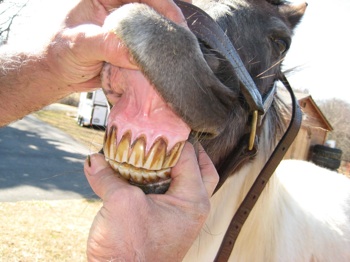Horse Facts and Pictures Biography
Source(Google.com)
Horses are scientifically called Equines. This derivates from their Latin name, Equus caballus. Close to them are donkeys, zebras, mules, the hinny and the Onager that is also known as the Asian Wild Ass.
Equines have been domesticated and bred by man for approximately 6000 years. They can be kept together with other animals as companions, e.g. sheep, goats, donkeys or cattle. They can be very attached to smaller animals, like cats. Dogs need to be well behaved and trained to avoid accidents, because horses are easily scared by dogs.
Have you ever wondered how old a pony/horse can get?
The oldest horse I’ve ever seen in veterinary practice was 48 years old! Usually they reach 30 years, ponies often live even longer. Their age can be estimated by looking at the incisors of the upper and lower jaws. From the age of 12 on it becomes very hard to say how old it really is, because the teeth are becoming worn that much.
Did you know how Equines are called at the different stages of life?
Any young baby-horse is called foal until it is 6 months old, then up to the age of 2 years we talk about yearlings. If it is a male horse it is called colt as long as it is under 4 years old. If it gets older than 4 we call him stallion. Most colts will be operated (castrated), because they are not intended to be used for breeding and they will be easier to handle, ride or drive and keep. After castration (removal of the testicles), it is called a gelding. A young female pony or horse is a filly and after the age of 4 years we call it a mare.
Did you know that Equines are very social animals?
We call a group of ponies or horses herd. In a herd is a clear defined hierarchy or ranking amongst the animals: the strongest, leading female is called alpha mare. One stallion can live together with about 20 -25 mares in a natural herd.
It is very important therefore to keep a horse always together with another companion, because kept on their own they soon become lonesome and suffer.
Do you speak "Horse-ish"?
You probably experienced already how equines communicate with each other. Whinnying and neighing can be heard, if you ride away from other horses or if they meet. Mares express very different sounds when they are nursing a foal. Deep, smooth sounds, whickering can be heard then. You might also have heard it at feeding time from other horses. To warn others in the herd, they use an alarming snorting. If two new ponies meet they are snuffling at each other and are very excited. Usually you can hear a sharp and loud squealing sound. They often face each other, squeal and lift a front leg or back up and swirl round, ready to kick. When a mare is in season, a stallion can express a loud roaring which is his mating call.
Horse Facts and Pictures Images Wallpapers Photos 2013

Horse Facts and Pictures Images Wallpapers Photos 2013

Horse Facts and Pictures Images Wallpapers Photos 2013

Horse Facts and Pictures Images Wallpapers Photos 2013

Horse Facts and Pictures Images Wallpapers Photos 2013

Horse Facts and Pictures Images Wallpapers Photos 2013

Horse Facts and Pictures Images Wallpapers Photos 2013

Horse Facts and Pictures Images Wallpapers Photos 2013

Horse Facts and Pictures Images Wallpapers Photos 2013

Horse Facts and Pictures Images Wallpapers Photos 2013
.jpg)
Horse Facts and Pictures Images Wallpapers Photos 2013
No comments:
Post a Comment